The Alexander Family, Ballyboley Dexters 2/3
Orlock Farm
There are some hedges on the farm which offer shelter and wildlife corridors for a range of birds, insects and mammals. However, by-in-large, the hedges had been over-managed in a way that has left them too narrow and too low to maximise ecological function. There are significant areas of scrub on the farm which is dominated mainly by whins. Whin is an important habitat for small birds such as the Stone Chat and Yellowhammer. These whins give excellent shelter for the cattle and they browse on the seasonal fresh flowers.
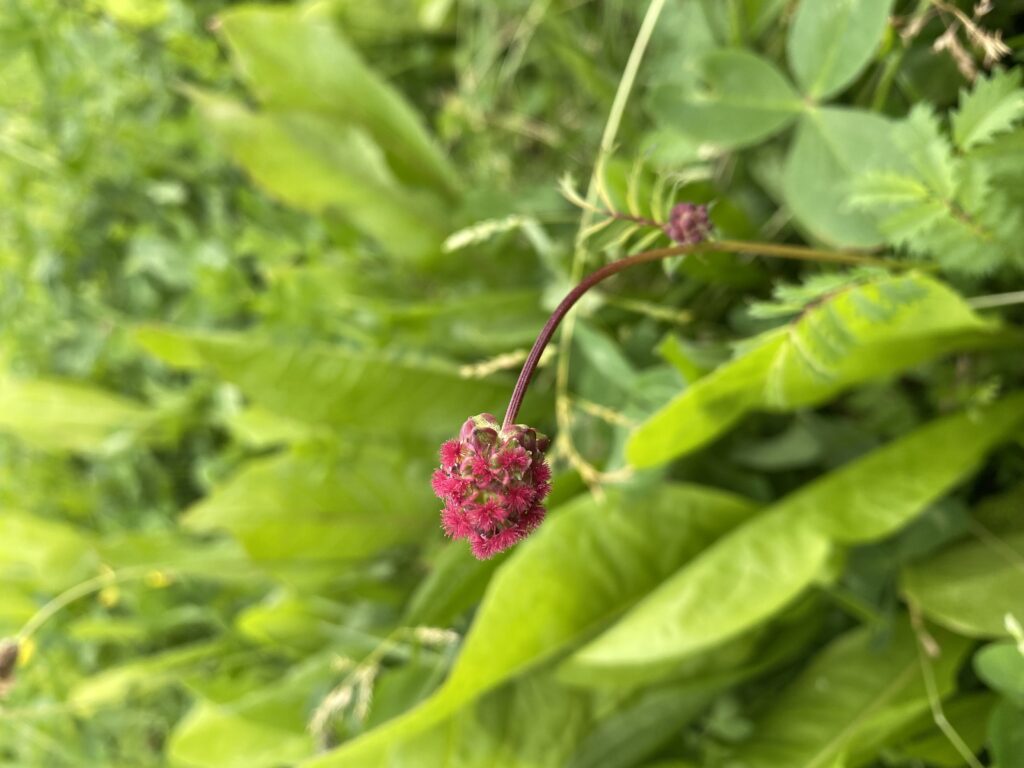
Burnet in flower amongst diverse pasture
Our mission was to put the entire farm in a permanent pasture to be used for grazing and preserved grass. In May 2022 we reseeded the entire farm with an individually developed multi species sward/herbal ley mix with 16 species in our grazing platform and 11 species in our cutting platform. These include a mixture of Timothy, Meadow Fescue, Festulolium, Red Clovers, White Clovers, traditional Rygrasses, Cocksfoot, Lucerne and Burnet, Chicory, Yarrow and Plantain. Importantly the clovers we have used are pollinating. We have been very impressed with the establishment of this sward in year one considering the drought conditions we have experienced on the East Coast.
At Orlock Farm there is an area of semi natural grassland. Our aim here is to revive this native grassland. We have been running a batch of young cattle on this area to remove thatch and reduce briars/brambles. We plan to graze this annually in Autumn/Winter removing cattle when the vegetation has been reduced. We may also consider further removal of some shrubs to maintain a meadow scrub patchwork habitat that would be attractive to birds such as Yellow Hammer and Tree Sparrow.
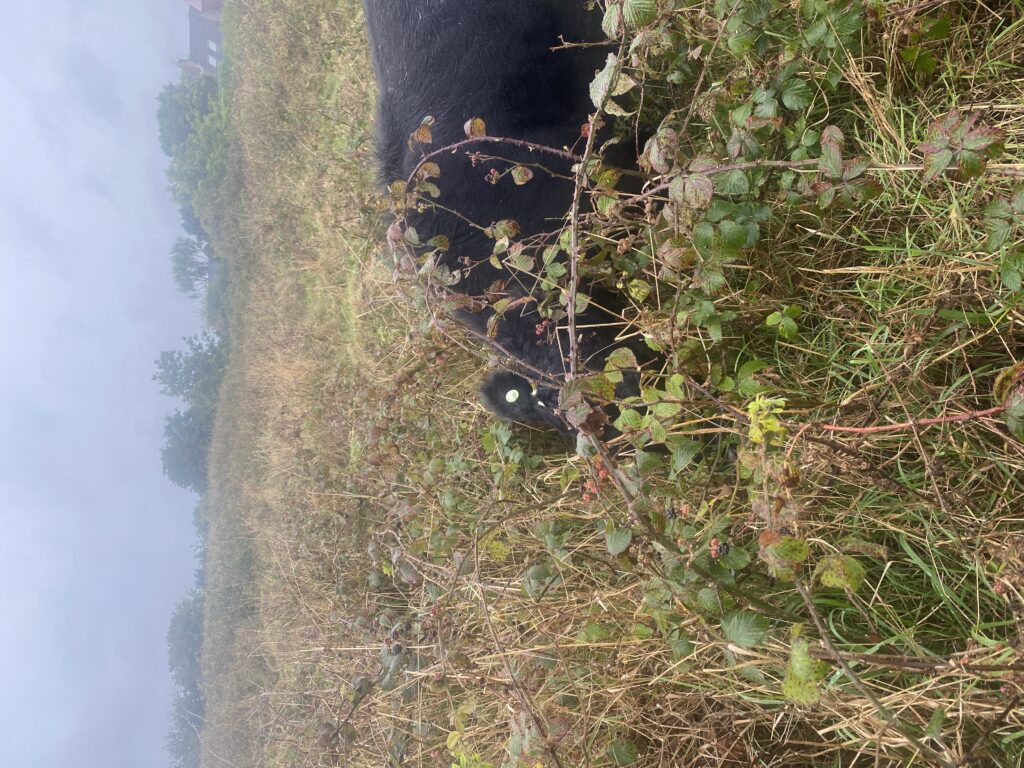
Dexters grazing in briars
Within the short period of time of pasture establishment at Orlock Farm there have been huge improvements in biodiversity. At the border of the farm there is an Area of Special Scientific Interest that runs to the Irish Sea. An immediate improvement is with the cessation of fertiliser and pesticide use there is no further chemical run off. This helps protect the ASSI which contains rare flora as well as stopping any chemical leaching into the Irish Sea. There is a path here that the pubic walk and the comments we have already received regarding the increase in bird and insect life have been amazing. Within an hour one day we observed a Sparrow Hawk take down a Linnet, a Kestrel hovering over the pasture and four Buzzards on the ground feeding on after birth from a recently calved heifer. The observation of the circle of life seen within such a short period really made us stop and think of the symbiotic relationships within the farm. We have noticed an increase in birds that were not frequently seen with the previous farming system such as House Martins and Greenfinches. We have observed Swallows feeding on insects in large numbers over the pasture. We have consulted bird watchers that live in the area and they have observed Goldfinches and Yellow Hammers as well as Blackbirds, Robins, Blue Tits, Coal Tits, Starlings, Thrush, Swallows, Jays and Swifts. We have also observed breeding pairs of Mallard Duck. At present (November 2022) the Pink Foot Geese, Greylag Geese and Hooper Swans appear to be enjoying the sward.
In September 2022 we introduced four hives of Black Irish Native Bees, they will help with pollinating and produce our first Ballyboley Honey. These bees are currently enjoying the flowering Ivy. We are proud to be part of the conservation project to help protect this endangered bee.
The increase in insect life has been outstanding. We are fortunate to have great support from the National Trust and they have completed transect studies at Orlock Farm looking at the butterfly and bee life during the period 12/08/2022 and 29/09/2022.
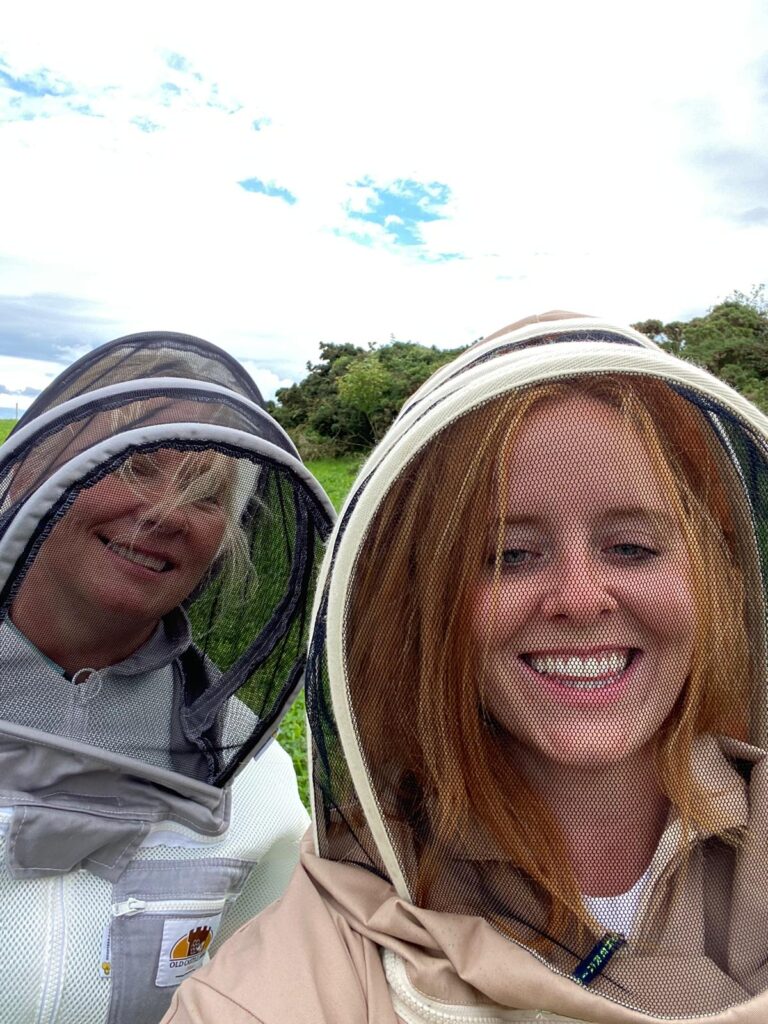
The Alexander family keep bees on the farm
During these studies seven species of Butterfly were observed at Orlock Farm including the Large White, Green-Veined White, Red Admiral, Small Tortoiseshell, Speckled Wood, Painted Lady and the Peacock butterfly. Interestingly the average number of butterflies at Orlock Farm was 16 and slightly lower along the adjacent coastal path with 11 butterflies counted. The highest count of all butterflies in one visit was 42 on the 25th August 2022.
Three species of bees have been observed including the White-Tailed/Buff-Tailed Worker (Bombus lucorum agg.), the Common Carder Bee and the Honeybee. Similar to the butterfly counts the average number of bees at Orlock Farm was higher at 35 with 29 bees counted at the adjacent Coastal Path. The highest count of all bees in one visit was 62 on 12th August 2022.
A significant count was recorded on 25th August 2022 with 42 butterflies and 48 bees at Orlock Farm and 30 butterflies and 18 bees on the coastal path. Of note when transects were completed on the same day there was always a higher number of pollinators at Orlock Farm. It will be fascinating to complete these studies annually and watch the change!
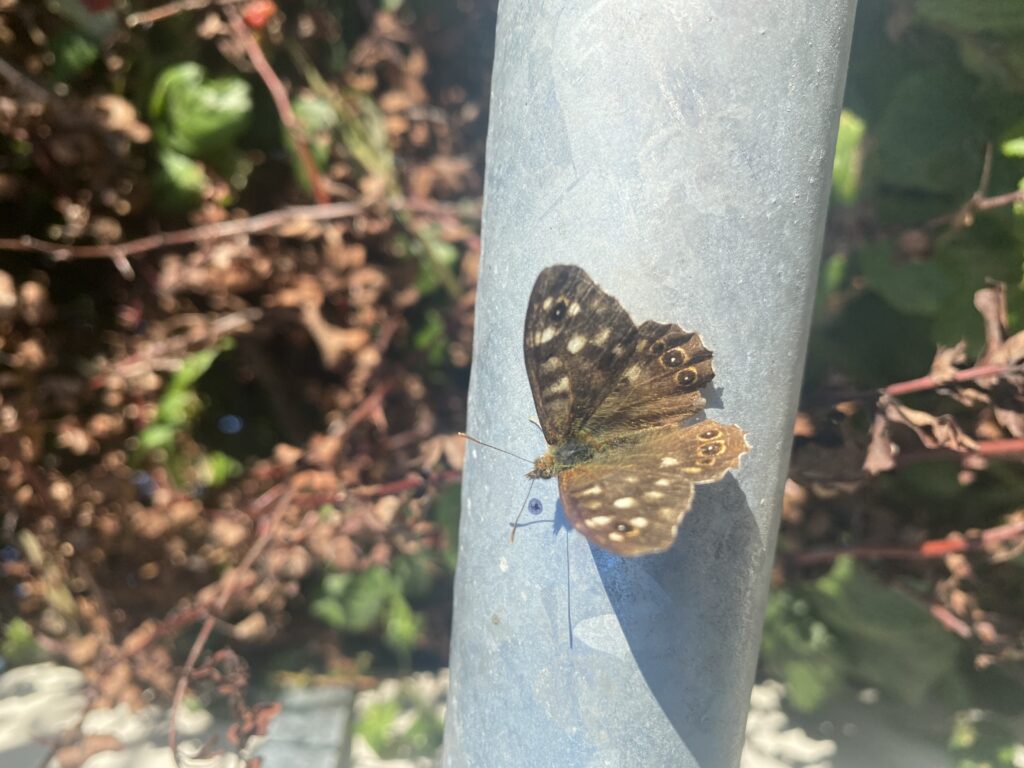
Speckled wood butterfly at the farm
How is it connected across the farm and beyond?
There are many other non-farm benefits for the wider environment and community from the creation and management of both Greyabbey and Orlock Farm. Many small changes on our farms have had big impacts in the wider landscape. We believe both farms can directly, and indirectly, contribute to the sustainability of our local rural communities and services, as well as to local and regional environmental issues. For example, a healthy farm landscape, with clean rivers and beautiful well managed farm land can enhance the area for tourists and locals. An increase in overall landscape heterogeneity and diversity benefits a wide range of wildlife. This includes our native pollinator species, which perform a vital role in our pasture-based system, as well as pollinating many of our native wild plants. Enhancing and protecting the landscape character of the area we farm has significant cultural value, both locally and nationally. Our farming practices have attracted a lot of interest from a wide range of stakeholders including MPs, local politicians, farming networks and government bodies. We have had many farmers to visit, sharing our knowledge and experience to encourage positive nature friendly changes on farms, no matter how small.
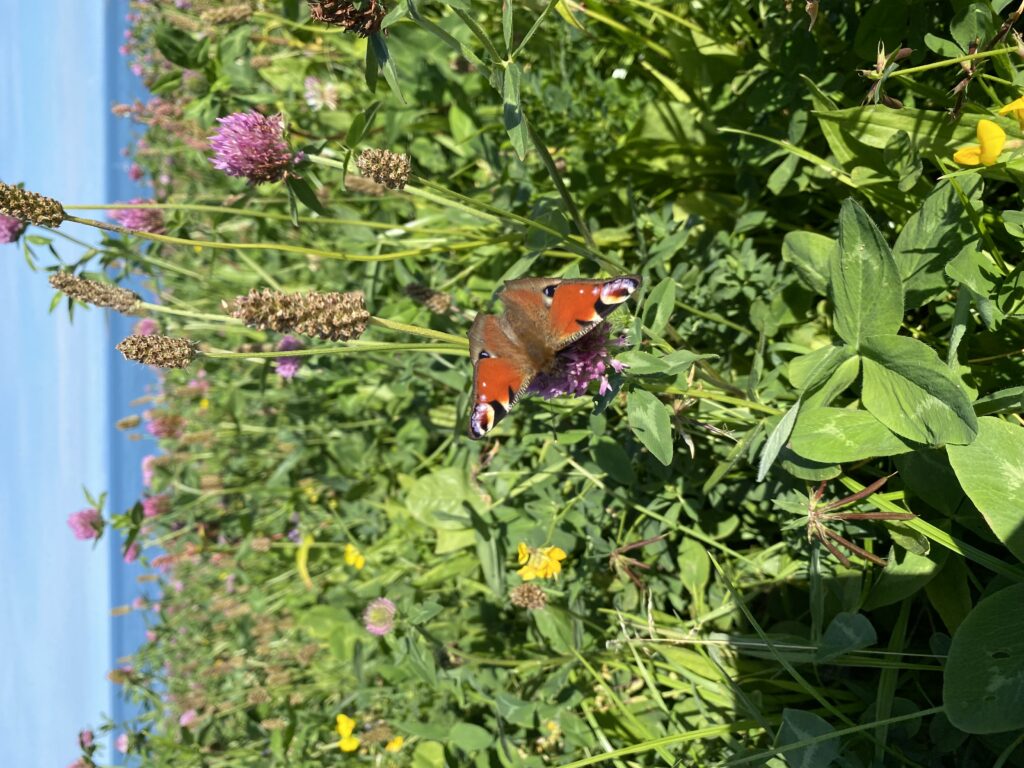
Peacock butterfly on clover pasture



